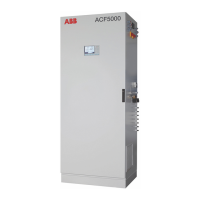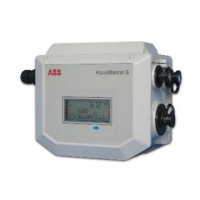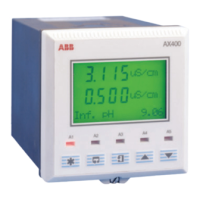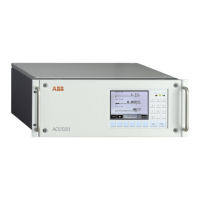42/24-10 EN Rev. 9 Chapter 2: Gas Analyzer Unpacking and Installation 2-5
Gas Connections Installation
Since the gas ports are now easily accessible, connect the gas lines to the
analyzer module before the gas analyzer is installed.
Gas Port Design The analyzer module gas ports have 1/8-NPT internal threads (connection diagrams
see Chapter 3 “Gas Line Connection”).
Material Supplied
Tubing connectors with 1/8 NPT threads and
PTFE sealing tape
yes
no
What materials are
needed?
or
Threaded connections with 1/8 NPT threads and
PTFE sealing tape
no
no
CAUTION!
The fittings must be clean and free of residue. Contaminants can enter the
analyzer and damage it or lead to false measurement results.
Do not use sealing compounds to seal the gas connections.
Sealing compound components can lead to false measurement results.
The gas connections on the gas module are made of plastic (PVDF). Do not
use metal tubing connectors or threaded connectors.
The gas connection ports on the Caldos25 versions for flowing reference
gas and for corrosive sample gas are made of plastic (PVC-C). Do not use
metal tubing connectors or threaded connectors.
Step Action
1 Remove the yellow stopper screws (5 mm Allen screws) from the
connection ports.
Screw the tubing or threaded connectors with sealing material in the
connection ports.
Gas Connection
Installation
2
Screw the fittings on carefully and not too tightly. Follow the
manufacturer’s installation instructions.
Gas Path Seal
Integrity Verification
The sample gas and reference gas (if applicable) path seal integrity is checked in
the factory. Since the gas path seal integrity can be affected during shipping, this
check should be performed at the installation site (see page 9-2 for instructions).
Since the system housing has to be opened if a leak is found, the gas path seal
integrity should be checked before the gas analyzer is installed.
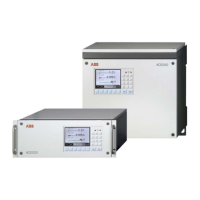
